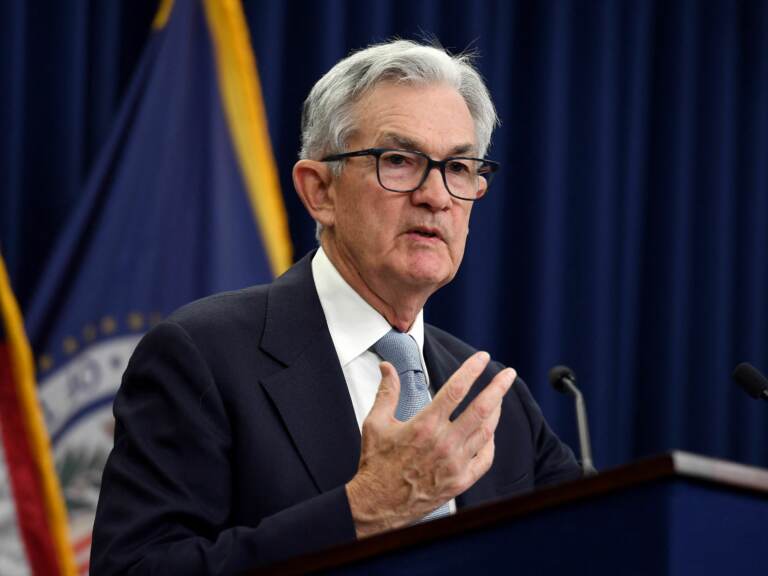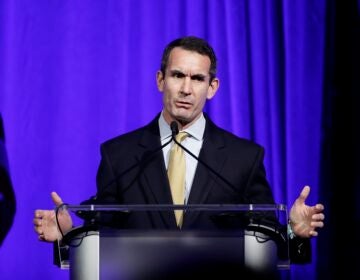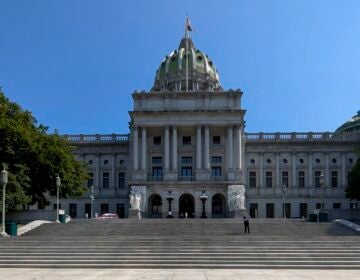The Fed raises interest rates again in what could be its final attack on inflation

Federal Reserve Chair Jerome Powell speaks during a news conference at the Federal Reserve in Washington, D.C, on March 22, 2023. (Olivier Douliery/AFP via Getty Images)
The Federal Reserve raised interest rates by another quarter percentage point Wednesday, extending its 14-month crackdown on stubborn inflation.
With signs of a softening job market and slower economic growth, forecasters think this could be the central bank’s last rate hike for a while, especially as turmoil in the banking sector raises new uncertainties.
The Fed hinted as much in a statement, dropping a line it used previously about the likely need for additional rate increases.
The Fed has raised borrowing costs at ten consecutive meetings, pushing its benchmark rate to between 5 and 5.25%. On average, that’s where Fed policymakers thought rates would be at the end of this year, when they last offered a forecast in March.
While inflation has cooled since last summer, it’s still more than twice as high as the central bank’s target of 2%.
Prices in March were up 4.2% from a year ago, according to the Fed’s preferred inflation measure. The “core” inflation rate, which excludes volatile food and energy prices, was 4.6%.
Has the Fed done enough?
The Fed’s efforts to curb inflation by slowing the economy with the most aggressive series of rate hikes since the 1980s are beginning to show results.
Construction and manufacturing — which are particularly sensitive to borrowing costs — have downshifted. And after a strong January, consumer spending slowed sharply in February and March.
The job market also appears to be losing some steam, although unemployment is still hovering near a 50-year low.
Job gains in March were the lowest in more than two years. And while layoffs are still rare by historical standards, they have been inching up.
Critics warn that additional rate hikes by the Fed would put more jobs at risk, without necessarily doing much to control prices.
“It becomes less and less warranted to continue pursuing policies that theoretically bring down inflation but at expense of the labor market,” said Lindsay Owens, executive director of the Groundwork Collaborative, a progressive think tank in Washington, D.C. “It’s not the case that we have to keep hammering away.”
Banking turmoil complicates the Fed’s job
Recent stress in the banking sector also factors in the Fed’s calculation. Since the collapse of Silicon Valley Bank and Signature Bank in March, other lenders have grown more cautious about extending loans.
The resulting drop in lending weighs on economic growth, much like rising interest rates, but its effects are even harder to calibrate and predict.
The Fed itself bears some responsibility for the banking turmoil, which has yet to abate with the collapse of First Republic Bank over the weekend.
The Fed’s aggressive rate hikes have reduced the value of some bank investments.
And a scathing report from the Fed last week found its own supervisors failed to properly monitor Silicon Valley Bank, allowing its problems to fester until it was too late.
Michael Barr, the Fed’s vice chair for supervision, blames a policy choice in 2019 that exempted all but the biggest banks from strict scrutiny, as well as a shift in culture at the Fed to favor a lighter touch in bank regulation. He promised more aggressive bank oversight in the future.
Barr’s findings and his call for stronger bank regulation were endorsed by Fed chairman Jerome Powell.
“I agree with and support his recommendations to address our rules and supervisory practices,” Powell said in a statement. “I am confident they will lead to a stronger and more resilient banking system.”
9(MDAzMzI1ODY3MDEyMzkzOTE3NjIxNDg3MQ001))




